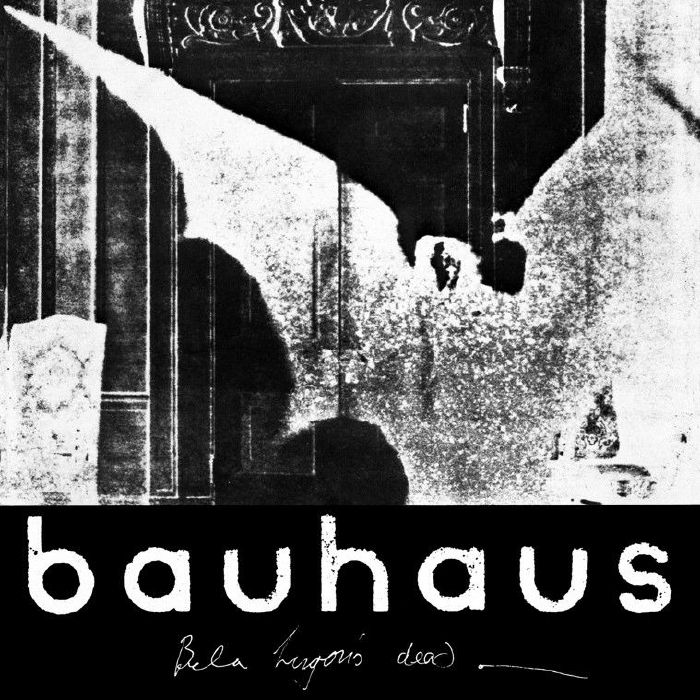Dusted Down: Bauhaus – The Bela Session (Leaving Records)
Bat’s the way to do it!

Bauhaus – The Bela Session (Leaving Records)
Goth strikes a very different chord today to the one it struck back in 1979. Thinking back to long before all the eyeliner, striped tops, gaunt skinniness and scene hair came to be connoted with the term now, Bauhaus are usually cited as the luminary goth band, responsible for a bulk of the subculture’s image. Until then, goth had only existed in primordial form. Siouxsie and the Banshees were the closest second example of a band describable prototypically as “gothic rock”, followed by Joy Division.
Unlike those bands’ vaguely underhanded focus on depression and darkness, Bauhaus’ live show, since day dot, drew on uniquely and undeniably gothic performative tropes like cabaret; arcane decor (crystal balls and tattered lampshades often appeared as key stage props); and early 20th-Century design tropes (they were first known as Bauhaus 1918). ‘Bela Lugosi’s Dead’, their very first EP – now getting a Leaving Records reissue – happily referenced the famous Hungarian-American actor who portrayed Count Dracula in the eponymous 1931 film. Bela Lugosi’s face is the one whom most of us subconsciously imagine whenever the name of pop culture’s most famous vampire is mentioned. The difference between us and Bauhaus, laughably, is that most of us can’t put a name to Lugosi’s face. Clearly, the band were supernaturally in tune with, and knowledgeable of, the gothic, recognising it for the underdeveloped gap in the market that it was.
Emerging from the earliest post-punk aftermists, this debut EP documents the band’s first studio session at Wellingborough’s Beck Studios in 1979. It was only a month after their debut live show a pub, the Cromwell, based in the same English town. Barely anyone attending this obscure show would clock that this was the birth of blood-sucking, batwing-flapping rock. From the opening, minimal clacks of the title track, through to the rubbery bass-bellied ending ‘Boys’, the tavern’s boozers probably wouldn’t have clocked anything more than the music’s rudimentary dub and rock n’ roll influences, and thought nothing of it further.
But listen attentively to the lyrics – not something many skins on the pisser would likely have the capacity to do – and you’ll be sure Bauhaus’ gothic sensibilities (in the literary sense) were present from the very start. The proclamation of Bela Lugosi’s death strikes an extra dark chord, as the character he initially portrayed was already, at least, undead. There are the repeatedly minor bass chords, not to mention the talk of “bats having left the bell tower” and the “virginal brides filing past his tomb”. Even the dub influence on the single seems prescient, with its rainmaker-style echoes sloshing about the mix in the manner of a wacked-out dub delay. What’s more, the song predated The Specials’ dub-goth ‘Ghost Town’ by two years!
The non-title tracks on the EP are less overtly gothic, dealing more casually in clean but raw rock n’ roll. ‘Some Faces’ lets darkness peak through its punchy drum hits and wails, speaking on the mood of dejection young people felt in the late ‘70s. “Most kids can’t find any current ties / so they might find that they can climb / they spin and spin, and hit and hit / and give it up”. Of course, this was a despondency that comparable bands like The Cure would later find some solace in, working out of the discontent scrapheap and into stardom. Goth, meanwhile, come to be known as a group of “malign protagonists” – bloodsoaked mouths and explosive hair being faux-contemptible characteristics – reclaiming an image of young people as increasingly unlikable and ‘good-for-nothing’.
Is there less desperation in goth today than there was 40 years ago? No. The mere existence of black-hair-flickers today – not to mention a renewed interest in Bauhaus the band – says something critical about our current state. Just like back then, discontent is everywhere, albeit in a much more insidious way – a state of generational locked-in syndrome. The perceptive among us, of course, still wear black.